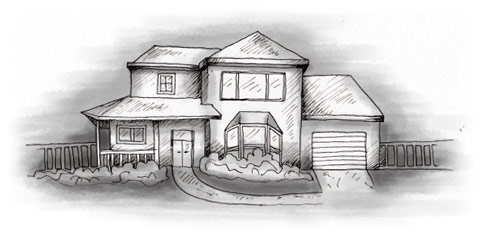Conveyancing in South Africa can only be carried out by a licensed conveyancer, i.e. a lawyer (the term attorney is also used in South Africa) who has passed the National Conveyancing Examination.
After an agreement of sale has been made, a conveyancer is appointed (normally by the seller, although the buyer will pay the fees) and instructions are sent to him by the estate agent. These include the names of both the buyer and the seller, a copy of the agreement of sale, and the passport numbers and marital status of the buyer and seller. The conveyancer then drafts the following documents:
- A power of attorney to pass transfer – This must be signed by the seller because it allows the conveyancer to transfer the property on his or her behalf.
- Declaration in respect of marital status, identity number and insolvency – The buyer and the seller must sign an affidavit in which they confirm their marital status; passport numbers and that they’re solvent.
- Transfer duty and value added tax (VAT) declaration – The buyer and seller must sign this to confirm the purchase price, which is conveyed to the Receiver of Revenue for the calculation of transfer duty (normally paid by the vendor). VAT is applicable only if the seller is VAT-registered, in which case he must sign a VAT declaration. If VAT is payable, no transfer duty is payable.
- Mortgage (bond) documents – If you’re obtaining a mortgage from a financial institution, the lender will require you to submit your identity document, marriage certificate and, if applicable, prenuptial contract in order for his own conveyancer to draw up the necessary documentation.
The conveyancer should then do the following:
- Contact the seller’s mortgage holder (bondholder), if there is one, to request the title deed and mortgage cancellation figures from his attorneys (lawyers) or conveyancers (note that there can be three conveyancers involved in a purchase).
- Obtain written confirmation of the buyer’s mortgage from the relevant financial institution;
- Ask the seller to pay any outstanding taxes, utility bills or levies so that a clearance certificate can be obtained from the local municipality (or managing agent in the case of a sectional title scheme) and lodged at the Deeds Office. A clearance certificate is usually valid for three months.
- Draft the transfer documents and the new title deed;
- Send the draft deed and guarantee requirements to the buyer’s lender (or the lender’s lawyer) for him to draw up the title guarantees.
The buyer and seller must then sign the transfer documents and the buyer must pay the transfer costs. The Receiver of Revenue will issue a receipt for the transfer duty. The seller must consent to the cancellation of his mortgage (if applicable) and the new deed is lodged at the Deeds Office, where it’s registered 8 to 14 days later. The seller’s mortgage is cancelled and the balance repaid (less any commission or penalties that apply).

